constituent assembly of india debates (proceedings)- volume vii
constituent assembly of india debates (proceedings)- volume vii
constituent assembly of india debates (proceedings)- volume vii
You also want an ePaper? Increase the reach of your titles
YUMPU automatically turns print PDFs into web optimized ePapers that Google loves.
There are no easy lateral communications between the Chulikata area and the Lohit Valley proper.<br />
By inhabitants, the hill tract falls broadly into portions inhabited by Abor (Siang Valley) the Chulikata<br />
in the Dibang Valley and other Mishmi in the Lohit Valley, and the Hkampti or Shan who are a<br />
comparatively civilised tribe following Buddhism. In addition there is the mixed population <strong>of</strong> the Sadiya<br />
portion to the south <strong>of</strong> Inner Line containing non-tribals and some Miri. Although the Gallong Abor are<br />
somewhat different from the Padam and Minyong the languages are practically the same and the whole<br />
<strong>of</strong> the Abor Tract could be regarded as reasonably uniform. The Mishmi area, though it falls into two<br />
separate portions along the Dibang and Lohit Rivers respectively, and the tribes do not under stand one<br />
an others language, could be treated as one. The Hkampti area which is the third one is small and the<br />
Sadiya population is a mixed one. The area beyond the Inner Line which is not censused is estimated to<br />
contain 250,000 Abor 40,000 Idu, 25,000 Digaru and Miji and about 2,000 Hkampti. The censused<br />
portion is an area <strong>of</strong> 3,309 square miles with a total population <strong>of</strong> 60,118 <strong>of</strong> which 39,974 are <strong>of</strong> tribal<br />
origin.<br />
The total area <strong>of</strong> the tract may be in the neighbourhood <strong>of</strong> 15,000 square miles and its development<br />
and administration clearly necessitate the sub-division <strong>of</strong> the tract and the appointment <strong>of</strong> more <strong>of</strong>ficials.<br />
In fact the Political Officer has already recommended the division <strong>of</strong> the tract into two portions based on<br />
Pasighat and Sadiya respectively. This is roughly equivalent to a division into the Mishmi area and the<br />
Abor area respectively and the proposals under consideration at present seem to contemplate the<br />
posting <strong>of</strong> a Political Officer at Sadiya for the Mishmi Agency with an Assistant with headquarters at<br />
Walong (Lohit Valley) and a second Political Officer at Pasighat (now the headquarters <strong>of</strong> an A. P.O.). The<br />
main reason for keeping Sadiya as the headquarters for the Mishmi Agency would appear to be the lack<br />
<strong>of</strong> lateral communications between the Chulikata area in the Dibang Valley and the Digaru area in the<br />
Lohit Valley. It is clear however that Sadiya and the portion up to the Inner Line is in the plains and<br />
contains a mixed population. Cultivation in this tract is also settled and the people <strong>of</strong> the tract desire that<br />
it should not continue under the present system <strong>of</strong> exclusion. Moreover, there is the area occupied by the<br />
Hkampti who are settled cultivators pr<strong>of</strong>essing Buddhism which has also spread a good deal <strong>of</strong> literacy<br />
among them. Prima facie there is a strong case for treating the plains portion <strong>of</strong> the tract as well as the<br />
Hkampti portion as regularly administered areas in the form perhaps <strong>of</strong> a separate subdivision or district.<br />
The distinctness <strong>of</strong> the Hkampti must however be borne in mind and the area will probably have to be<br />
treated as a separate taluk. An early and detailed examination <strong>of</strong> the whole question is clearly called for.<br />
If Sadiya is treated as plain, suitable headquarters for the Political <strong>of</strong>ficer <strong>of</strong> the Mishmi Area needs to be<br />
looked for keeping in mind the difficulties <strong>of</strong> communication between the Dibang and Lohit valleys.<br />
With the exception <strong>of</strong> the Hkampt is who are settled cultivators, and may be regarded as<br />
comparatively civilised, and a few people in the plains portion who also do settled cultivation, the Abor<br />
and Mishmi pursue jhuming and appear to exhibit little competence in the art <strong>of</strong> raising crops. They <strong>of</strong><br />
course eke out a livelihood by keeping poultry, sheep and mithun. The herds <strong>of</strong> mithun kept by these<br />
tribes are in fact the occasion for disputes between people as raiding for mithun seems to be in this area<br />
what head-hunting is in the Nag a tribal area. Serious quarrels arising out <strong>of</strong> raiding for mithun may call<br />
for the intervention <strong>of</strong> the Political <strong>of</strong>ficer. The tribes are generally heavily addicted to opium and<br />
attempts to keep the growth and consumption <strong>of</strong> opium in check seem to be meeting with little success.<br />
Though we feel that the Abor and Mishmi are people who can be educated and assimilated to civilised<br />
administration in a comparatively short time, there is little literacy or education among them at present,<br />
and the depth <strong>of</strong> the area over which control has been established beyond the Inner Line does not seem<br />
to be great. Communications are the urgent need so that greater contact is possible even if the lack <strong>of</strong><br />
education is regarded as no impediment. By the time the five year plan has been worked out (it<br />
contemplates the making <strong>of</strong> a road to Walong and improvement <strong>of</strong> communications in other respects<br />
also) it may be possible to give effect to the keenly expressed desire among the Abors <strong>of</strong> a share in the<br />
provincial administration. It is obvious that the pace <strong>of</strong> establishment <strong>of</strong> full-fledged administration in<br />
this area should be accelerated. A beginning should however be possible by way <strong>of</strong> political education <strong>of</strong>


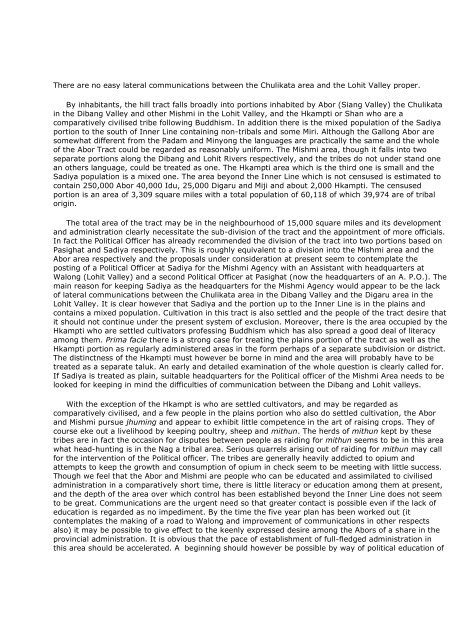
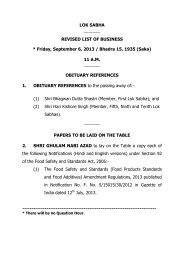
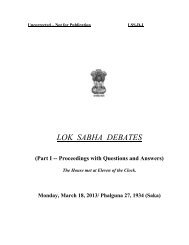

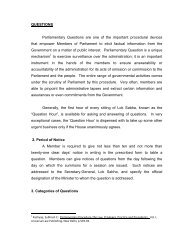
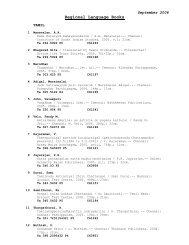

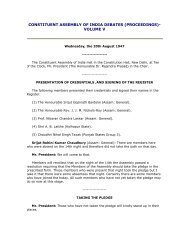

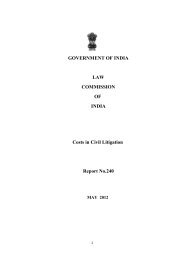
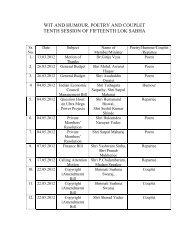
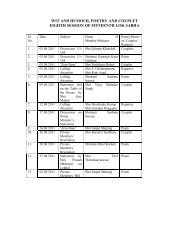

![gÉÉŌ A.]ÉŌ. xÉÉxÉÉ](https://img.yumpu.com/8015720/1/190x245/geeo-aeo-xeexee.jpg?quality=85)
